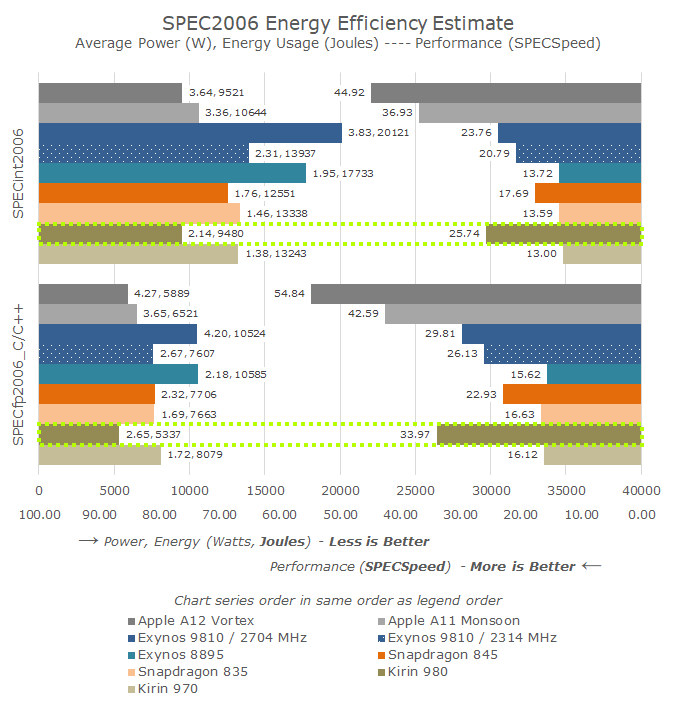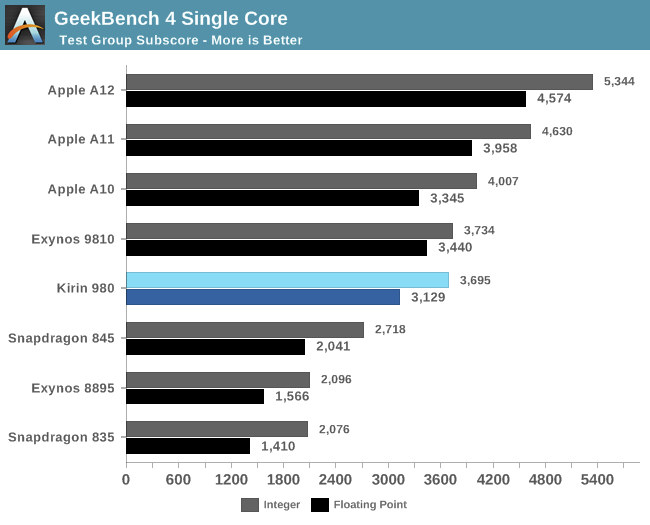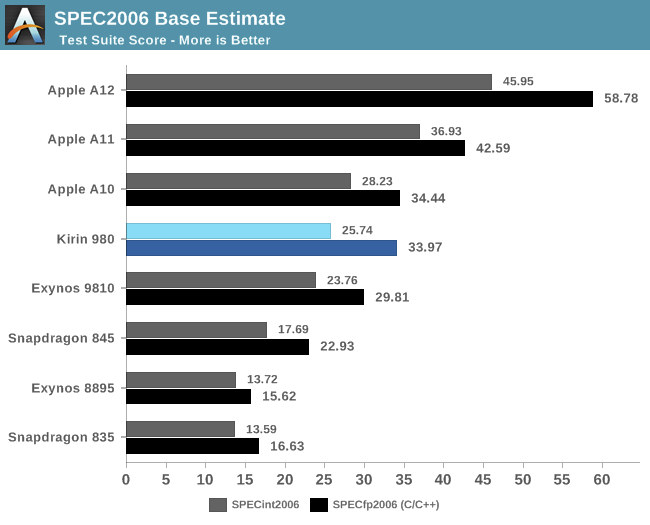HiSilicon Kirin 980 was the first processor announced with Cortex A76 cores, which were said to deliver laptop-class performance, with 35% performance improvement over Cortex A75, and around twice the performance of Cortex A73 cores thanks to improvements, and a higher CPU frequency up to 3.0 GHz.
But now that Huawei Mate 20 / Mate 20 Pro smartphones are out, various reviews have been published, and Anandtech was mostly able to confirm the claims. In most case, actual results were inline with expectation despite Kirin 980 clock speed being “limited” to 2.6 GHz.
Looking at GeekBench 4 single-thread integer and floating-point scores, the Cortex A76 core based Kirin 980 is significantly faster than Cortex A73 powered Snapdragon 835 clocked @ 2.45 GHz. Precisely: 1.77x faster in the integer score,and 2.21x faster in the floating point score.
SPECS2006 confirmed the good performance with 1.89x higher integer score, and 2.04x faster for the floating-point benchmark. If we adjust the scores to compare the processors at the same frequency, Cortex A76 is 1.58x and 1.79x faster for respectively integer and floating-point scores.
 But there’s more than just performance in battery powered device, and power consumption is important too, and here again Arm Cortex A76 shines with improved performance while using significantly less energy.
But there’s more than just performance in battery powered device, and power consumption is important too, and here again Arm Cortex A76 shines with improved performance while using significantly less energy.

Jean-Luc started CNX Software in 2010 as a part-time endeavor, before quitting his job as a software engineering manager, and starting to write daily news, and reviews full time later in 2011.
Support CNX Software! Donate via cryptocurrencies, become a Patron on Patreon, or purchase goods on Amazon or Aliexpress






